 The BBC has teamed up with Hewlett-Packard Labs and Gavitec to provide a digital collaboration based around the BBC TWO series, Coast.
The BBC has teamed up with Hewlett-Packard Labs and Gavitec to provide a digital collaboration based around the BBC TWO series, Coast.
The trial will allow roving ramblers to reach for their phone and call up site-specific extra audio and WAP content from the programme using “visual triggers” and their mobiles phones.
The system employs data codes – which look much the same as your average barcode on a tin of beans – and hikers with Series 60 camera phones will be able to read these codes and connect directly to BBC content.
Although rarely seen on UK streets, data code technology is big in Japan, where it’s used for linking to personal information from business cards and providing extra info from posters and magazine advertisements.
The BBC trial will involve placing the data codes on plaques at 100 locations around the UK. Users will need to download the free HP and Gavitec-developed software from bbc.co.uk to access the service.
Less well-equipped trampling travellers can access a rich WAP site by texting COAST to 81010, while harassed parents may be able to earn some peace by letting their kids take part in the SMS text quiz provided.
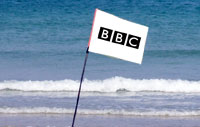 For phone-allergic types, the BBC will also make MP3 audio from the project available as a free download from bbc.co.uk.
For phone-allergic types, the BBC will also make MP3 audio from the project available as a free download from bbc.co.uk.
The content aims to add local information and colour, with simple narrated pieces about the area, short dramatisations and contributions from local people (“Gerrrrofff my land, townie!”).
The audio pieces are short’n’ sweet (less than two minutes long) so users won’t be hit with a tractor-sized phone bill and are designed to stimulate an interest in finding out more about each location.
Mark Jacobs, Executive Producer of Coast Mobile scrubbed down his wellies and enthused: “We’re very excited about this latest trial from the BBC. Not only do we get a chance to use cutting edge mobile technology, but we also get to give our audience an enriched location based multi-media experience exactly where it makes most sense – where they are standing.”
Those taking part in the trial will be invited to participate in a series of questionnaires and interviews on their mobile experience to see if it’s a hiking hit or a meandering miss.
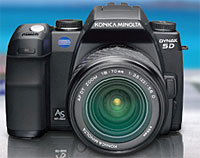 It wasn’t that long ago that digital dSLRs were the sole preserve of well-heeled enthusiasts and the pestering paparazzi, but with prices continuing to fall, digital dSLRs are coming within the reach of the mainstream.
It wasn’t that long ago that digital dSLRs were the sole preserve of well-heeled enthusiasts and the pestering paparazzi, but with prices continuing to fall, digital dSLRs are coming within the reach of the mainstream. In February this year, Canon returned with its cheaper-faster-more featured next generation 8 megapixel camera, the EOS350D (Digital Rebel XT) retailing for US$880 (~£503, ~€728) while Nikon’s similarly priced D50 was introduced in April.
In February this year, Canon returned with its cheaper-faster-more featured next generation 8 megapixel camera, the EOS350D (Digital Rebel XT) retailing for US$880 (~£503, ~€728) while Nikon’s similarly priced D50 was introduced in April.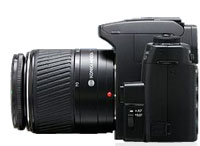 The rest of the specs of the camera are impressive but not cutting edge: 6.1 megapixel sensor, JPEG and RAW image capture (RAW: 3 fps, up to 5 frames), white-balance bracketing, 100-3200 ISO, built-in pop flash and USB 2.0.
The rest of the specs of the camera are impressive but not cutting edge: 6.1 megapixel sensor, JPEG and RAW image capture (RAW: 3 fps, up to 5 frames), white-balance bracketing, 100-3200 ISO, built-in pop flash and USB 2.0.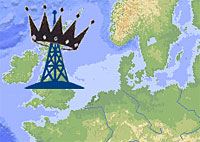 A report from consultancy firm BroadGroup has revealed that the deployment of wireless hotspots in Europe have soared by 67 percent in the six months up to May 2005.
A report from consultancy firm BroadGroup has revealed that the deployment of wireless hotspots in Europe have soared by 67 percent in the six months up to May 2005.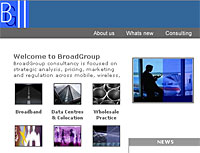 As many a disgruntled transatlantic traveller may tell you, Wi-Fi access in Europe still remains considerably more pricey than the US market, although the report suggests that “price declines are continuing to trend downwards” (I think this means, “prices are going down”).
As many a disgruntled transatlantic traveller may tell you, Wi-Fi access in Europe still remains considerably more pricey than the US market, although the report suggests that “price declines are continuing to trend downwards” (I think this means, “prices are going down”).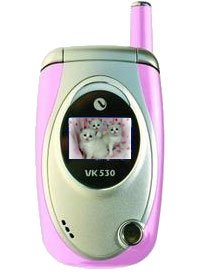 With a survey that could be described as pointless fluff at best and patronising drivel at worst, Vodafone D2 have trotted out the details of their ‘Women and Mobile Phones’ market research survey.
With a survey that could be described as pointless fluff at best and patronising drivel at worst, Vodafone D2 have trotted out the details of their ‘Women and Mobile Phones’ market research survey. Neatly half of women use the camera on their phone with 37 percent of respondents citing the provision of Bluetooth for wireless data transfer as important.
Neatly half of women use the camera on their phone with 37 percent of respondents citing the provision of Bluetooth for wireless data transfer as important.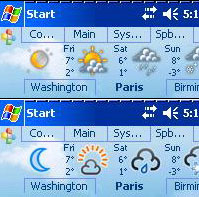 For travelling PocketPC users unsure whether to pack away a brolly or load up with the sunscreen lotion, Spb Weather could prove to be an essential tool.
For travelling PocketPC users unsure whether to pack away a brolly or load up with the sunscreen lotion, Spb Weather could prove to be an essential tool. Once installed, it’s simply a case of choosing the cities you want displayed (you can manually add unlisted locations), and then having a fiddle about with all the fun display options lurking in the options dialog.
Once installed, it’s simply a case of choosing the cities you want displayed (you can manually add unlisted locations), and then having a fiddle about with all the fun display options lurking in the options dialog.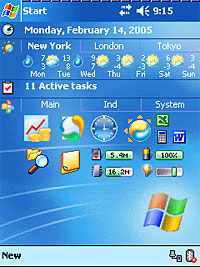 For travellers, tourists and stay-at-homers with a passing interest in the weather, this is a handy, fun application that adds real value to a Pocket PC. Recommended.
For travellers, tourists and stay-at-homers with a passing interest in the weather, this is a handy, fun application that adds real value to a Pocket PC. Recommended.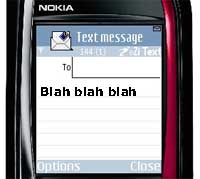 Us in UK-land have long been fans of SMS messaging, with button-pushing Brits banging out 3 million text messages every hour, with 2.5 billions text being sent in January 2005 alone.
Us in UK-land have long been fans of SMS messaging, with button-pushing Brits banging out 3 million text messages every hour, with 2.5 billions text being sent in January 2005 alone.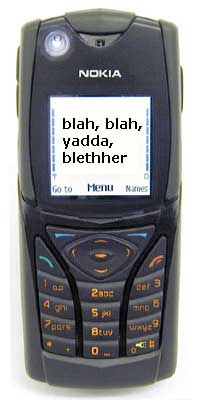 GSM operator T-Mobile was particularly chuffed with its performance as its customers belted out a total of 3.6 billion messages during Q1 2005 – that works out at around 67 texts per subscription per month.
GSM operator T-Mobile was particularly chuffed with its performance as its customers belted out a total of 3.6 billion messages during Q1 2005 – that works out at around 67 texts per subscription per month.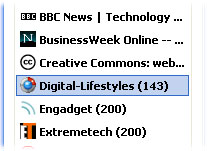 Developed by Nick Bradbury, the smart fella responsible for creating the fabulous Homesite (still our fave HTML editor) and the superb Top Style CSS Editor, FeedDemon 1.5 is a powerful RSS aggregation tool.
Developed by Nick Bradbury, the smart fella responsible for creating the fabulous Homesite (still our fave HTML editor) and the superb Top Style CSS Editor, FeedDemon 1.5 is a powerful RSS aggregation tool.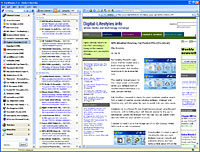 We found this approach intuitive and fast, although users with small monitors may have to indulge in an orgy of scrolling to view all the content in its default layout.
We found this approach intuitive and fast, although users with small monitors may have to indulge in an orgy of scrolling to view all the content in its default layout. FeedDemon’s new podcasting tools let news-hungry junkies download audio files and automatically copy them to their iPod (and, notably, other media players) with the bundled FeedStation utility allowing the scheduling of downloads – letting users charge up their iPod with new content while they’re snoozing.
FeedDemon’s new podcasting tools let news-hungry junkies download audio files and automatically copy them to their iPod (and, notably, other media players) with the bundled FeedStation utility allowing the scheduling of downloads – letting users charge up their iPod with new content while they’re snoozing. palmOne transmogrifies into Palm, Inc today, following an announcement on May 24 that the company had acquired unencumbered rights to the Palm brand after buying out the share of the brand formerly controlled by PalmSource, Inc.
palmOne transmogrifies into Palm, Inc today, following an announcement on May 24 that the company had acquired unencumbered rights to the Palm brand after buying out the share of the brand formerly controlled by PalmSource, Inc.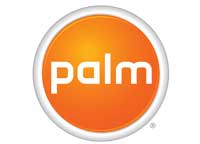 Palm have a bit of a history with faffing about with their name. palmOne was created in October 2003 when the earlier Palm, Inc. spun off PalmSource and acquired Handspring, Inc.
Palm have a bit of a history with faffing about with their name. palmOne was created in October 2003 when the earlier Palm, Inc. spun off PalmSource and acquired Handspring, Inc. Research has revealed that two thirds of UK Internet users are deeply unchuffed about having to pay a BT line rental on top of their broadband subscription.
Research has revealed that two thirds of UK Internet users are deeply unchuffed about having to pay a BT line rental on top of their broadband subscription. Vonage has demanded ‘Naked DSL’ in the UK, which would enable consumers to independently subscribe to telephone and broadband services and allow users to subscribe to a VoIP service instead of a traditional fixed-line service,
Vonage has demanded ‘Naked DSL’ in the UK, which would enable consumers to independently subscribe to telephone and broadband services and allow users to subscribe to a VoIP service instead of a traditional fixed-line service,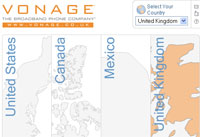 “The broadband infrastructure will support a variety of services, one of which is telephony. Customers should be able to decide what services they want to ‘plug’ into their broadband network in the same way that they choose their electricity provider,” he added.
“The broadband infrastructure will support a variety of services, one of which is telephony. Customers should be able to decide what services they want to ‘plug’ into their broadband network in the same way that they choose their electricity provider,” he added.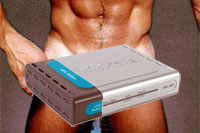 “We are aware that applications providers that don’t contribute to the cost of building and supporting that ever improving broadband network have little appreciation of the economics involved,” said a BT spokesman. “Our customers, however, do”.
“We are aware that applications providers that don’t contribute to the cost of building and supporting that ever improving broadband network have little appreciation of the economics involved,” said a BT spokesman. “Our customers, however, do”.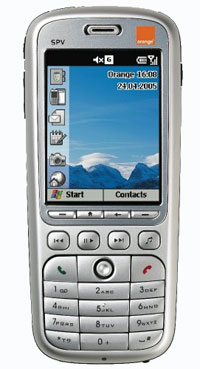 It’s been a long time coming, but Orange have finally announced that their Windows Mobile-powered SPV C550 smartphone will go on sale later this month
It’s been a long time coming, but Orange have finally announced that their Windows Mobile-powered SPV C550 smartphone will go on sale later this month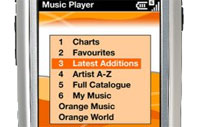 Songs downloaded through the phone’s Music Player software are DRM-protected, although the built in Fireplayer application will let punters remix their fave tunes into ringtones.
Songs downloaded through the phone’s Music Player software are DRM-protected, although the built in Fireplayer application will let punters remix their fave tunes into ringtones. Matthew Kirk, Director of Devices at Orange was ready and willing to spin out the PR schmooze: “Since the launch of the first SPV handset three years ago, Orange has led the development of smartphones and provided its customers with a choice of the latest and most powerful devices. The Orange SPV C500 was the world’s smallest smartphone and today its successor provides the first realistic alternative to carrying around a separate MP3 player, phone and PDA.”
Matthew Kirk, Director of Devices at Orange was ready and willing to spin out the PR schmooze: “Since the launch of the first SPV handset three years ago, Orange has led the development of smartphones and provided its customers with a choice of the latest and most powerful devices. The Orange SPV C500 was the world’s smallest smartphone and today its successor provides the first realistic alternative to carrying around a separate MP3 player, phone and PDA.”